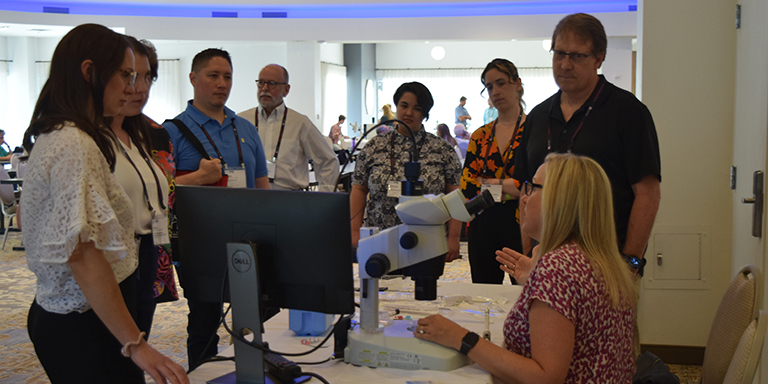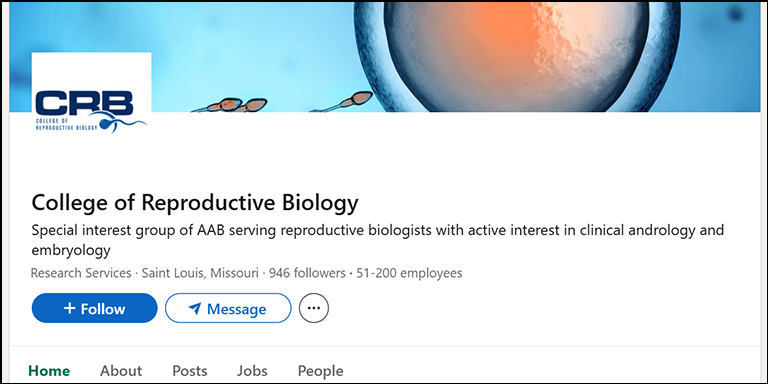Meeting Committee
 |
| Marina Gvakharia, M.D., Ph.D., HCLD/ELD(ABB), MT(AAB) |
Dear peers,
At CRB meeting committee, we are very pleased and excited that D. Shoukrat Mitalipov accepted our invitation to deliver a keynote lecture at CRB annual educational conference in May of 2015.
It is my pleasure to present this short introduction of Dr. Mitalipov and his work to our membership in anticipation of our IQ-boosting exercise in May of this year (don’t forget to make your plans early!).
Dr. Shoukhrat Mitalipov is a Director of the Center for Embryonic Cell and Gene Therapy at Oregon Health Science University. He earned his Ph.D. degree in Developmental and Stem Cell Biology at the Research Center for Medical Genetics in Moscow, Russia. In 1995-1998 he conducted his postdoctoral research in stem cell and developmental biology at Utah State University. Dr. Mitalipov joined OHSU in 1998.The chief focus of Dr. Mitalipov’s research is to study gamete, embryo and stem cell biology using cutting edge molecular and cellular methodologies. His current projects focus on genetic and epigenetic mechanisms responsible for reprogramming of somatic cells to the totipotent and/or pluripotent state using somatic cell nuclear transfer (SCNT) and iPS cell technologies. Specifically, his group is researching the role of mitochondria and mitochondrial genome (mtDNA) in reprogramming the developmental program in totipotent and pluripotent cells that were derived from adult somatic cells. According to laboratory’s website, “the Mitalipov lab also investigates novel gene therapy approaches designed to prevent transmission of gene defects from parents to their children. Mutations in mtDNA contribute to a diverse range of still incurable human diseases that are maternally inherited through the egg's cytoplasm. It is estimated that at least 1 in 200 born children inherit mtDNA mutation that may lead to disease. Mitalipov's team has pioneered the mitochondrial genome replacement approach in mature oocytes and demonstrated that the reconstructed oocytes with the donor mtDNA are capable of supporting normal fertilization, embryo development and produced healthy monkey offspring. This discovery suggest that the nuclear genetic material from a patient's egg containing mtDNA mutations could be removed, and transplanted into an enucleated egg containing normal mtDNA donated by a healthy female. A child born following fertilization with the husband's sperm would be free of risk from maternal mtDNA mutations as well as the authentic biological child of the patients. The overall goal of ongoing research initiative in Mitalipov lab is to translate these preclinical and clinical studies into clinical trials evaluating efficacy and long-term safety in families affected by mtDNA disease.”
Dr. Mitalipov’s lecture at CRB 2015 will be titled: “Is three a crowd? An update on nuclear transfer, cloning, and other exciting stories”. Here are some bullet points of the talk he has planned for us:
- Mitochondrial dysfunction is implicated in disease and in age-related infertility.
- Mitochondrial replacement therapies (MRT) in oocytes could prevent transmission of mtDNA defects from parents to their children.
- MRT also offers replacement of the deficient cytoplasm in oocytes from older patients, with the expectation of high pregnancy rates following IVF.
- Lastly, somatic cell nuclear transfer (SCNT) offers MRT for patients with inherited or acquired mtDNA disease while generating metabolically rescued pluripotent stem cells.
Do you feel smarter already? I certainly do.
If you are really determined about doing your homework before the meeting, here is some spring break reading for you:
Kang E, Wu G, Ma H, Li Y, Tippner-Hedges R, Tachibana M, Sparman M, Wolf DP, Schöler HR, Mitalipov S. Nuclear reprogramming by interphase cytoplasm of two-cell mouse embryos. Nature. 2014 Mar 26. PMID: 24670652
Tachibana M, Amato P, Sparman M, Gutierrez NM, Tippner-Hedges R, Ma H, Kang E, Fulati A, Lee HS, Sritanaudomchai H, Masterson K, Larson J, Eaton D, Sadler-Fredd K, Battaglia D, Lee D, Wu D, Jensen J, Patton P, Gokhale S, Stouffer RL, Wolf D, Mitalipov S. Human embryonic stem cells derived by somatic cell nuclear transfer. Cell. 2013 Jun 6;153(6):1228-38. PMID: 23683578
Tachibana M, Amato P, Sparman M, Woodward J, Sanchis DM, Ma H, Gutierrez NM, Tippner-Hedges R, Kang E, Lee HS, Ramsey C, Masterson K, Battaglia D, Lee D, Wu D, Jensen J, Patton P, Gokhale S, Stouffer R, Mitalipov S. Towards germline gene therapy of inherited mitochondrial diseases. Nature. 2013 Jan 31;493(7434):627-31. PMID:23103867
Tachibana M, Sparman M, Ramsey C, Ma H, Lee HS, Penedo MC, Mitalipov S. Generation of chimeric rhesus monkeys. Cell. 2012 Jan 20;148(1-2):285-95. PMID: 22225614
Tachibana M, Sparman M, Sritanaudomchai H, Ma H, Clepper L, Woodward J, Li Y, Ramsey C, Kolotushkina O, Mitalipov S. Mitochondrial gene replacement in primate offspring and embryonic stem cells. Nature. 2009 Sep 17;461(7262):367-72. PMID: 19710649
Byrne JA, Pedersen DA, Clepper LL, Nelson M, Sanger WG, Gokhale S, Wolf DP, Mitalipov SM. Producing primate embryonic stem cells by somatic cell nuclear transfer. Nature. 2007 Nov 22;450(7169):497-502. PMID: 18004281
See you all in Vegas!
Cheers,
Marina Gvakharia
Chair
CRB Meeting Committee



